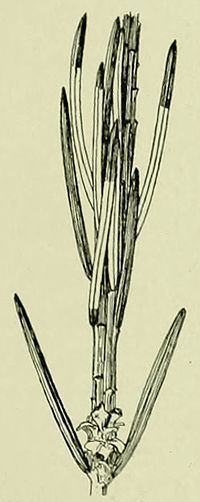Rank Species | Genus Coleotechnites Order Butterflies and moths | |
 | ||
Similar Butterflies and moths, Recurvaria leucatella, Athrips rancidella, Exoteleia dodecella, Carpatolechia decorella | ||
The orange spruce needleminer (Coleotechnites piceaella) is a moth of the Gelechiidae family. It is found in north-eastern United States and Canada. It is an introduced species in Europe and was first recorded from Great Britain in 1952, then Germany in 1963 and has expanded from there over all of central Europe, towards France, Italy and Hungary.
The orange spruce needleminer is found on spruce and balsam fir from Alberta to Nova Scotia, as well as in the northeastern United States, but causes inconsequential damage (Rose and Lindquist 1985).
There is one generation per year.
Description
The larvae feed on various spruces, including Picea omorika and Picea pungens. The larvae mine needles that are bound loosely with silk during summer and fall. After spending the winter in a hollowed needle, it eats buds or mines needles formed during the previous year, again tying them with silk.
When full-grown in late June or early July, and about 8 mm long, the larvae pupate in silken cells on the foliage or on the ground. The pupae become adults in about 12 days and the females lay their eggs in the foliage. The eggs hatch and the young larvae feed from August to late September before hibernating near the feeding sites. In the fall, larvae mine living needles, but some larvae are found on dead needles, apparently feeding there on fungi.
